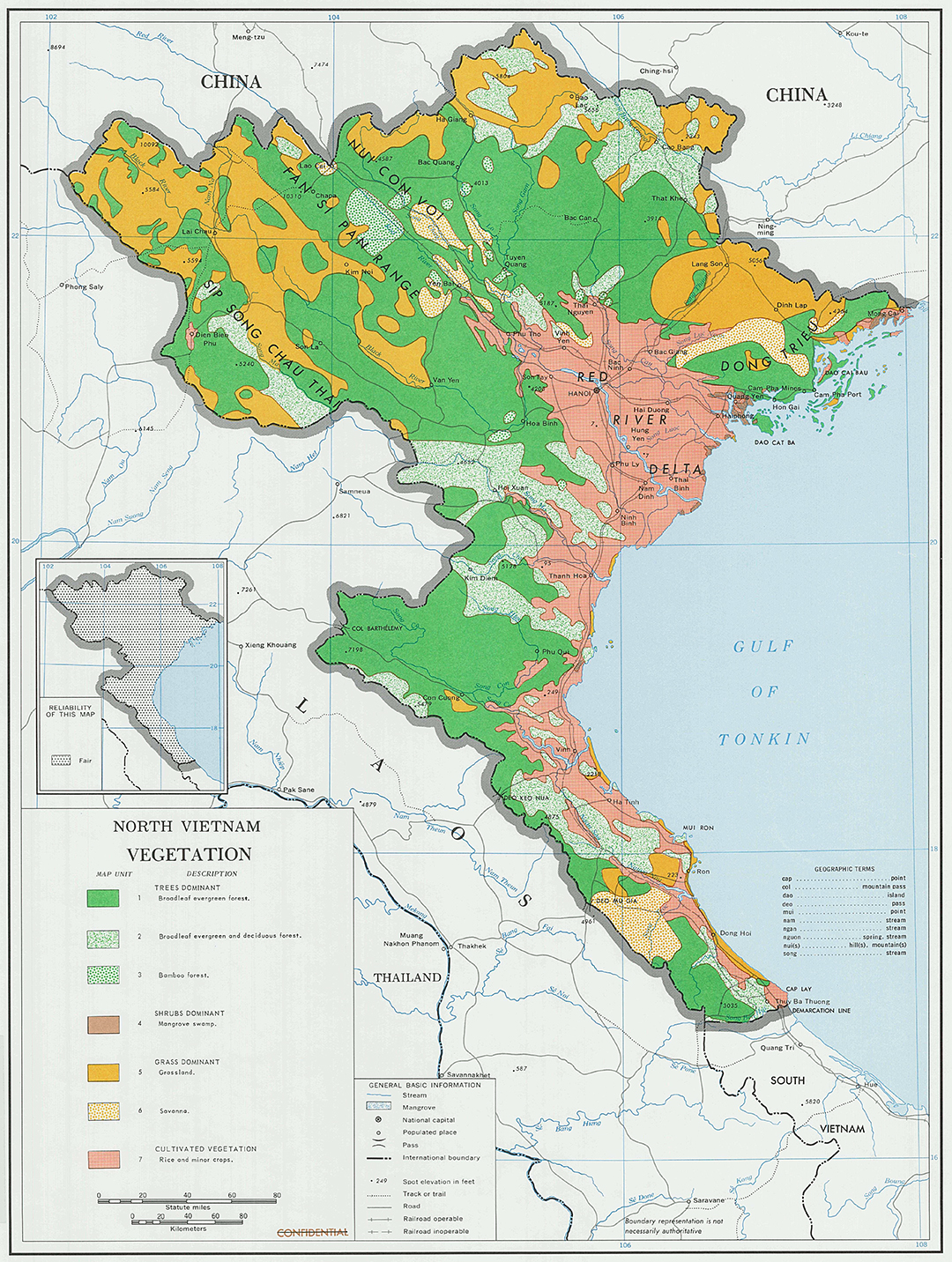Since the Viet Cong insurgents and North Vietnamese Army supply lines relied on the cover of dense jungles for concealment, the U.S. resolved to reduce the enemy’s jungle cover using chemical defoliants. This unusual map created by the CIA demonstrates how the forests of North Vietnam were seen as an obstacle to military objectives. The forests have been marked in different colors according to type, such as bamboo forests, broadleaf evergreen forests and mangrove swamps.
Despite heavy bombings and the use of chemical defoliants, it was difficult to completely eliminate the concealment offered by forests and also difficult to locate determined enemies who had built underground bunkers to survive. In the long term, the use of chemical defoliants had a drastic impact not only on the landscape but on the health of American and Allied servicemen (including Australian soldiers) and on local civilians. This impact continues to be felt.
The Vietnam War was not the first time that forests had been targeted by military forces. During World War I, opposing sides used artillery to blast away cover offered by trees, and yet again, firepower forced combatants to survive by going underground. As in Vietnam, the shells left a lasting impact on the landscape, contaminating nature and groundwater, and people who witnessed the destruction and its aftermath were deeply affected. The targeting of forests during both World War I and Vietnam continues to provoke strong emotions, with discussions and works of art from members of the public ongoing.

